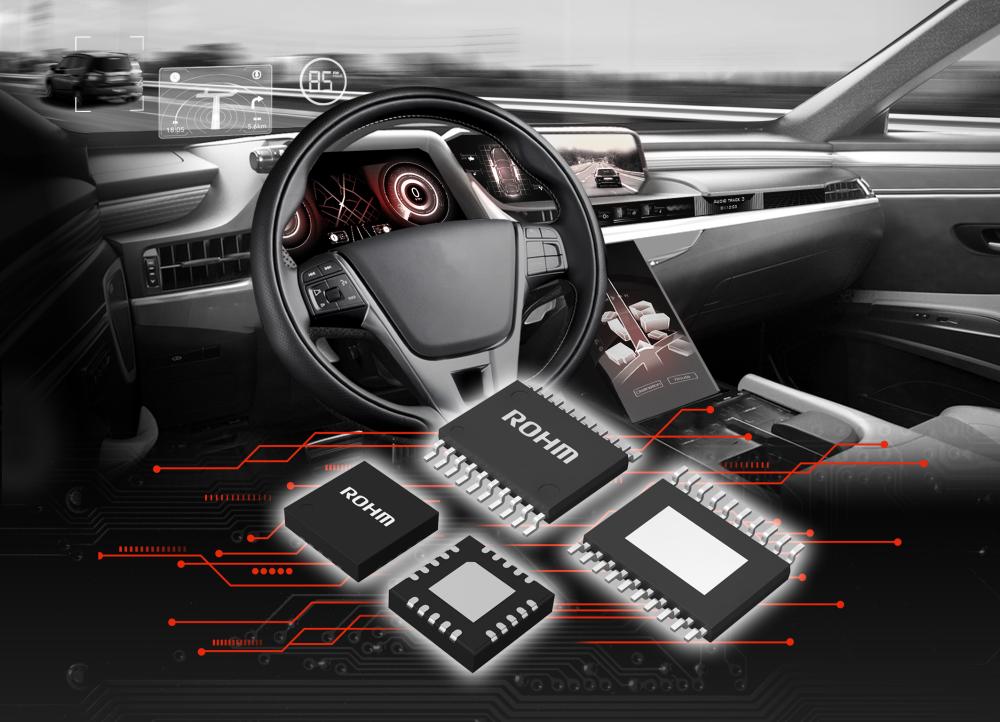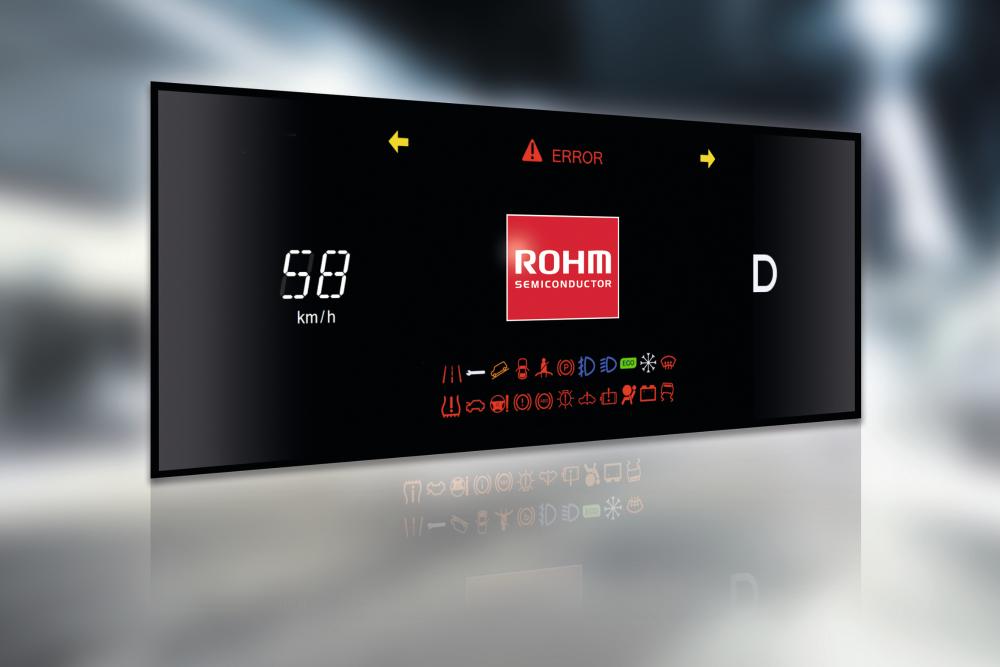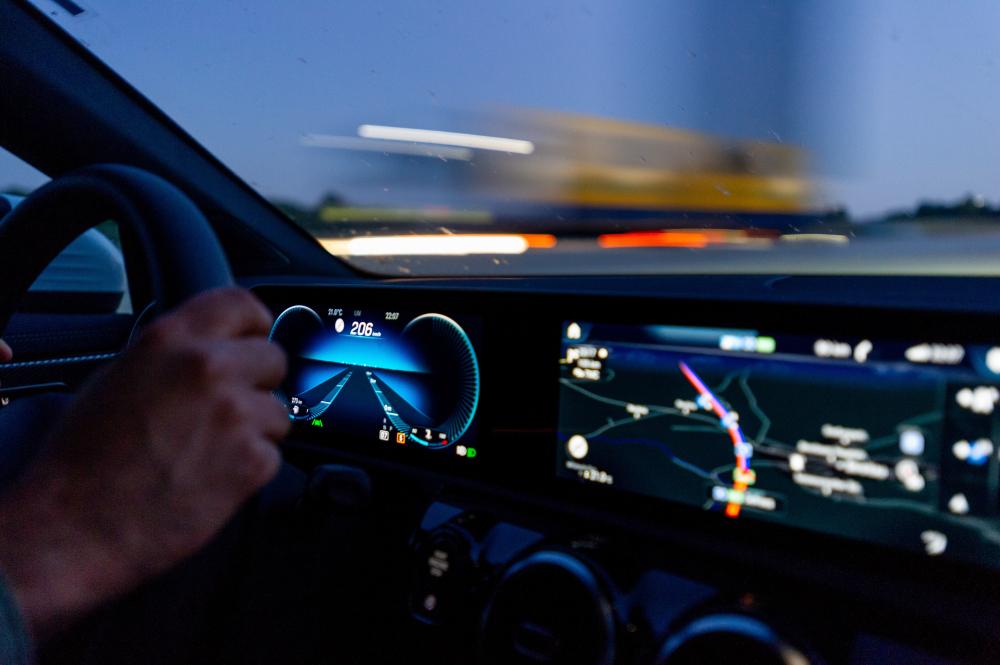12 Display Technology Trends shaping the Automotive Future – Part 2
12/08/2020
Car displays for the instrument cluster and the center console are today’s standard configuration for the higher and middle market segments. Moving from the distributed to the domain computing architecture has many advantages for standalone displays and both interior designers and engineering teams benefit from it. Innovations in the user interface but also new types of displays such as head-up-display and e-mirrors require IC components to support integrated concepts whilst reducing complexity and cost. Our overview of automotive display technology trends highlights the most important ones and outlines how ROHM Semiconductor is part of this development. Last time, we introduced the first six trends: [Link]. In part 2 we present to you six further promising display technology trends:
At a Glance: 12 Automotive Display Technology Trends
Part 1
1. Larger display, higher resolution
2. Head-up displays, electronic mirrors and more
3. The display – central component for future user interface concepts
4. Innovative chip solutions
5. Changing architecture
6. Reducing complexity
Part 2
7. Display interfaces
8. A new serial protocol
9. Ensuring driver’s safety
10. Image analysis is crucial
11. Access to Information – anytime
12. Technology beyond data
7. Display interfaces
Since the resolution of displays is increasing, the bandwidth and speed of the interfaces are also growing. Conventional protocols such as LVDS are limited for high resolutions (above 2K) and do not prove to be cost-effective at system level. ROHM is one of the first companies to offer display ICs for the automotive sector equipped with an eDP (embedded Display Port) interface, whether timing controller (T-CON) or splitter. These can be easily connected to the latest generation of Display SerDes ICs on the market.

Over time, more and more applications have been realized with automotive displays – and innovative ROHM chip solutions inside
Additionally, ROHM offers a complete solution consisting of T-CON and driver ICs for display resolutions beyond 6k and for connection lengths that can reach up to 2m from the driver board to the panel glass. Thus, a so-called Pillar-to-Pillar display – a display that covers the complete width of an automobile cockpit – is easy to realize in the automotive environment.
8. A new serial protocol
A larger diagonal glass increases the link length from a driver board including the T-CON, to each driver IC. ROHM has developed and implemented a high-speed serial protocol to simplify the design and ensure safe transmission of the video signals to the display glass.
In contrast to the proprietary approach of most competitors, ROHM has opened the interface for interested solution providers. Manufacturers of display panels, cables and semiconductors as well as Tier 1 manufacturers, can benefit equally from this ecosystem.
9. Ensuring driver’s safety
Another important aspect revolves around the safety of displays: Standard display panels cannot be installed in a car because of the higher quality and safety requirements. Lighting conditions in a car are extreme and not comparable with CE requirements. Also safety requirements do not stop at simple mechanical stability. Specific image and check functions must ensure driving safety at all times.

Image and check functions of high quality ensure the safety of drivers
The most common requirement for safety-relevant displays, such as the instrument cluster, is defined by ASIL (level B), which is typically implemented and certified at system level by the Tier1. This is achievable and supported by the built-in ICs which are designed for this purpose. ROHM offers display ICs that provide a comprehensive range of features to meet those safety goals. This is confirmed by the ISO26262 standard to which ROHM is certified for the development of its display products.
10. Image analysis is crucial
For safety-relevant displays, such as instrument clusters, Head-up-Display (HuD), mirror replacement and the rear view displays, it has to be ensured at all times that the display shows exactly the intended image. For this purpose, the display must be continuously monitored according to the checks defined by the safety goals with regards to the timing and content of the video stream.
One of the most important functions in ROHM’s display ICs is the integrated image analysis and comparison down to the individual pixel. The comparison of each video frame or a selected frame region with a predefined reference value is part of the standard repertoire. Another crucial function which applies to camera generated video is the detection of a frozen picture. Both are typical examples of errors that have to be detected.
11. Access to Information – anytime
In addition, it must be ensured that the driver always receives the most important information, even if, for example, no video data reaches the display due to a computer failure or cable break. For this, the display unit must still be able to generate at least simplified graphics autonomously. As an example, the driver must always know which driving mode the car is in (P, R, N, D), or what the state of the tank, the battery charge or the handbrake is.

Smoothly operating displays grant the drivers with access to crucial information
ROHM has continued to develop the functions for checking the image content and generating the so-called On Screen Display graphics over several product generations. As a result, today, for each product group (T-CON, Video Splitter, Repeater) a suitable IC is available for every purpose.
12. Technology beyond data
Driving a display panel with the correct video data is only one of many safety aspects. In addition, the backlighting of a typical TFT/IPS display must also be constantly monitored. The LED driver ICs also need to integrate diagnostics and status functions to detect and report errors of the driven LEDs.
Additionally, ROHM offers specialized PMICs (Power Management ICs) for the proper power supply of a display panel which ensure safe and controlled operation of a display by means of diagnostics and status functions.
With its competence in the field of display technology, ROHM Semiconductor contributes to shape the automotive future – in the long run.
